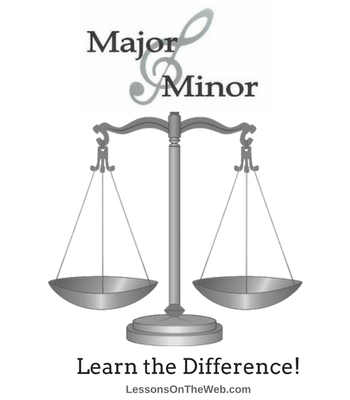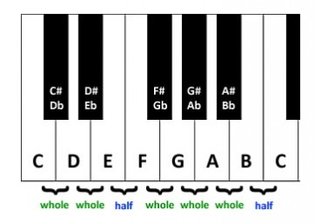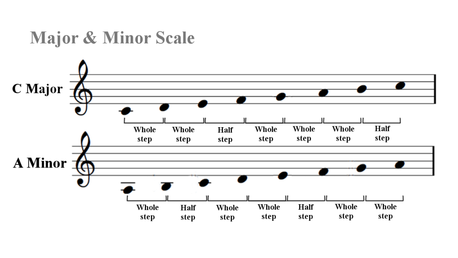|
As a pianist you will at some point learn how to play scales and will practice them in a lot of different ways. There are many types of scales, but the first two that we learn in music are usually our Major and Minor scales. When we talk about groups that are called major and minor, baseball might be one of the things that comes to mind. In piano music, Major and Minor scales are in 2 different groups as well and they are based on the Major and Minor Key Signatures. You have probably listened to music in both major and minor keys many times without realizing it. We often pick up on the differences subconsciously but we can see it in how we emotionally respond to the music. Let's see what the main differences are between Major and Minor Keys and their scales! First - Major and Minor Keys sound completely different.
Second - the scales that we play in each mode have different step patterns in between the notes. When looking at your piano keyboard, remember:
Major Scales have 1/2 steps between the 3rd and 4th note, and the 7th and 8th notes. Minor Scales have 1/2 steps between the 2nd and 3rd notes, and the 5th and 6th notes. Do you see how this is a completely different pattern than the Major scale fingerings? The 1/2 steps in this image for the A minor scale are between B & C, and E & F. You can actually turn a Major Scale into a Minor scale by simply lowering the 3rd, 6th and 7th notes by a 1/2 step. Third - Major keys have only one basic type of scale with the same finger pattern (1/2 & whole step) in every scale. Once you know the Major scale finger pattern, you can basically play every major scale there is, without "knowing" the scale ahead of time. Minor keys however, have 3 different types of scales that we can play.
Usually, we learn the natural form first, then move on to the Harmonic and Melodic forms. Each of these different types of Minor scales have their own finger patterns as well, that you will use in all minor scales in that particular style. Now that we see the 3 main differences between Major and Minor scales and keys, we need to also be aware of one very important thing that connects the 2 different groups actually making them cousins in a way! Every Major scale, has what we call a Relative Minor scale. Meaning...that for any scale you play whether it be Major or Minor, it has a "relative" in the other group that it connects with; sharing the same key signature. For example - look at C Major. The key signature of C major has no sharps and no flats. Now, to find the relative minor of C Major, simply count backwards, or to the left of C if you are looking at your keyboard, and go back three 1/2 steps. When we do this, we end up on the note A. So A, is the relative minor of C Major. The key signature for A minor will be exactly the same as it is in C Major. Notice where the 1/2 steps are in each of the 2 types of scales. Your finger patterns are different from each other when it comes to the 2 different groups, but they are the same for each scale that you play, in a specific group. *All major scales have the same finger patterns as well as each type of minor scale. Sound, finger patterns, and how many forms of each - are the main differences between Major and Minor Scales and Key signatures. Even with their differences, we also see that each one is basically a mirror image of its relative minor or major by sharing the exact same key signature. As always, music is there to show us how we connect to each other much more than we realize, even with our different sounds, patterns, and ways we express ourselves. Stay Tuned to LessonsOnTheWeb to learn much more and achieve your dream of playing the piano!
hgb vou
4/23/2021 07:21:13 am
no i dont
Reply
Leave a Reply. |
AuthorMost blogs written by Archives
June 2020
Categories
All
|





 RSS Feed
RSS Feed